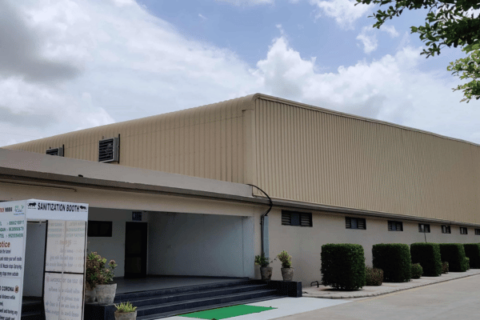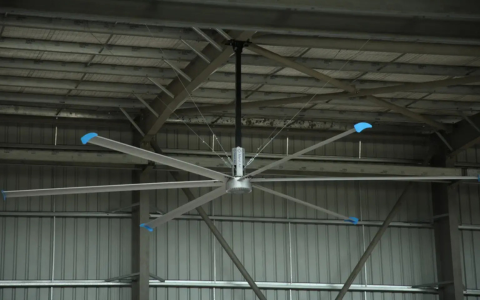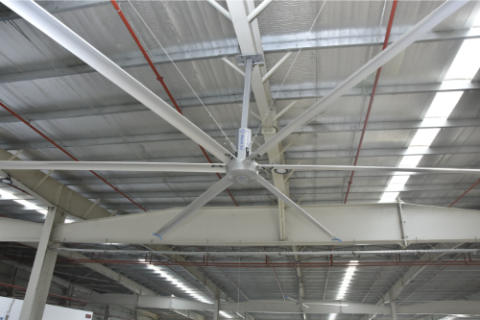Airports, buses, and train terminals receive a high volume of passengers daily. Not only do these places have large volumes of space, but they also face challenges in managing temperature, air circulation, and energy consumption. One solution is the HVLC Fans. These fans are designed specifically for large indoor spaces, since they require massive amounts of air circulation to be pumped at low speeds.
Why Transportation Hubs Need Efficient Cooling & Ventilation
Transport facilities – airports, train stations and bus stations must provide cooling and ventilation efficiently to protect the health and safety of the occupants, the integrity and operation of sensitive equipment, and the ability to operate as efficiently as possible. Hubs have challenges typical of their large open spaces, variety of activities, high pedestrian traffic, and frequent exposure to the high or low outside weather that standard HVAC systems have difficulty providing.
For health and comfort
- Reduced spread of disease
- Improved air quality
- Enhanced comfort
- Mitigation of “sick building syndrome”
For operational efficiency and equipment
- Protected electronic equipment
- Reduced energy costs
- Improved employee performance
- Reduced condensation
Top 5 Benefits of HVLS Fans
Improved Temperature Control
In sprawling facilities covering areas measuring thousands of square feet, an even temperature is hard to maintain. HVLS Fans come to the rescue by mixing layers of air and achieving even temperature. During winter, they direct the warmer air that accumulates along the ceiling downwards. In summer, they induce a breeze-like cooling effect, which also minimises the need for round-the-clock air conditioning. The temperature balance makes both passengers as well as working staff comfortable.
Better Air Circulation
Public areas require a great deal of airflow, particularly where people gather. Air movement is important because stagnation causes discomfort. HVLS Fans provide air circulation in large spaces which ensures air is always flowing. This keeps the environment fresh and prevents the suffocation that frequently occurs in congested areas.
Improved Ventilation and Well-being
The areas with intensive human activities or vehicular traffic require proper air circulation for health reasons. Gases, dirt, and other solid and liquid particles collect rapidly in confined spaces.
HVLS Fans perform in the enormous coverage area and airflow supply, and eradicate these contaminants, therefore changing the indoor environment for better. This makes not only comfortable but health-friendly environment.
Energy Savings
In large transportation facilities, the cost of electricity can be high due to the constant use of traditional cooling systems. Cooling and ventilating a given space using HVLS Fans helps reduce expenditure considerably. They rotate air in a given space at a lower cost in electricity. They also lessen the burden on HVAC systems and prolong the life of air conditioners and other electrical systems, leading to great financial savings on electricity later.
Quieter Operation
In comparison to their actual size, HVLS Fans are quite silent. It is especially crucial in public facilities where clear communication by means of announcements must be ensured. Their noiselessness ensures there is always calm and orderliness.
Real-World Applications of HVLS Fans in Transportation Hubs
High-volume, low-speed (HVLS) fans are utilized in transportation hubs that include airports, train stations, and bus depots to manage climate control, improve air quality, and provide a better space for travelers and employees. They can effectively displace a large volume of air and have a larger airflow area making them more effective and efficient with energy than traditional HVAC or smaller fans.
Conclusion
Installation of HVLS Fans in transportation centres is an effective step in promoting comfort, health, and energy efficiency. Their silent operations, extensive coverage, and minimal operational expense make them an intelligent investment for Indian transit facilities of today.
People Also Ask About the Benefits of HVLS Fans for Large Transportation Hubs
Question 1. Why are HVLS fans better than traditional ceiling or pedestal fans in transportation hubs?
Answer. In transportation hubs, HVLS fans are better than traditional ceiling fans because of their greater energy efficiency, vast air circulation coverage, improved comfort and enhanced safety.
Question 2. Can HVLS fans help reduce energy costs in large transportation facilities?
Answer. Yes, HVLS fans can help to reduce energy costs in large transportation facilities by improving HVAC efficiency and reducing reliance on heating and cooling systems.
Question 3. How much maintenance do HVLS fans require compared to air-conditioning systems?
Answer. HVLS fans require less maintenance such as periodic inspections, cleaning, and checks for wear and tear, while AC systems require frequent filter changes, refrigerant checks, duct cleaning and inspections of multiple complex components.
Question 4. Are HVLS fans suitable for both open and closed areas in bus depots or metro stations?
Answer. Yes, HVLS fans are suitable for both open and closed areas in bus depots and metro stations if they are correctly sized and placed.





